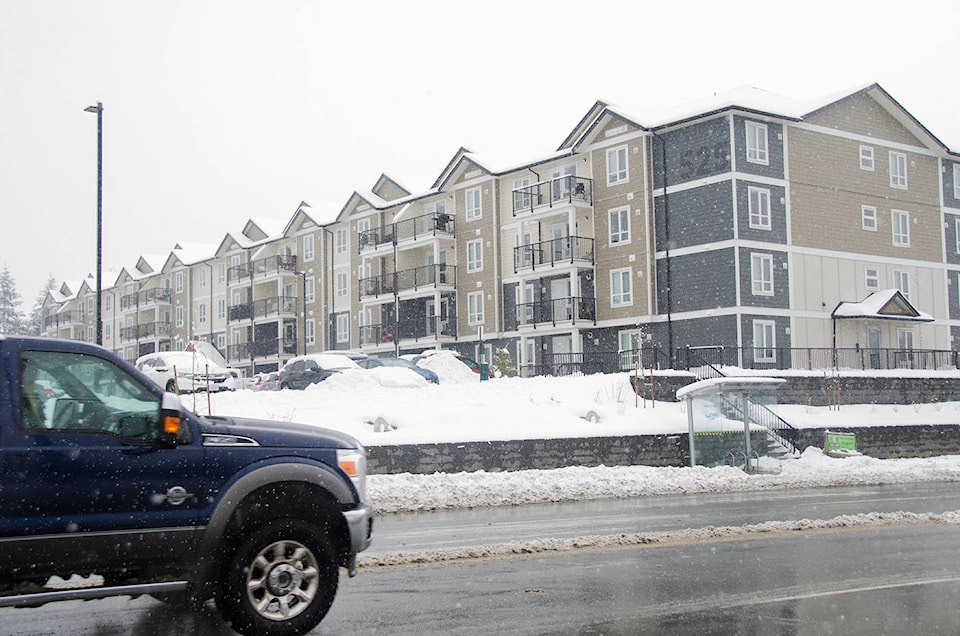Campbell River City Council gave development permit approval to Phase 2 of the new complex at 525 South Dogwood Street last week, but not before expressing some concern about the level of increased density in the area and possible problems that could come with it.
“I am becoming increasingly aware of the amount of density and the amount of traffic that is now becoming extremely compacted in a very small area south of the Merecroft lighted intersection,” said Coun. Michele Babchuk during the discussion surrounding the approval of 28 townhouses being added to the property immediately behind the movie theatre. “With the existing building, the new construction that is happening there, the existing building that’s in behind those ones and now this new (townhouse) one, we certainly need to be taking a look at how those cars are being funneled out onto Dogwood,” suggesting the possibility of at least a “right in/right out” meridian to access the complex.
“Staff share very similar concerns,” said development planning supervisor Andy Gaylor, which is why a traffic impact assessment has just been done “that takes a look at the safety coming in and out of the site and also takes a look at the full build-out and the impact on four intersections including the site access along Dogwood.”
Gaylor says, however, that Phase 2 of the project – the addition of the 28 townhouses – “raises no particular concerns” in terms of increased traffic.
But Babchuk says her concern isn’t necessarily just about the 28 new townhouses.
“We are already seeing the impacts of increased traffic in that area,” she says. “I drive it every day and I see, at least three times a week, the rear-end accidents that are so close to happening and are becoming more and more frequent. I don’t believe we should be waiting until another building is proposed. We should be more proactive on that.”
Development services manager Kevin Brooks says that they are currently analyzing the new traffic impact study to assess any future impact the additional density could have on the area, but it doesn’t appear at this point that it will be a problem.
“I find it difficult to believe that any traffic engineer cold come up and say there’s no issue with this,” Cornfield says, agreeing with Babchuk, “especially people trying to make left turns.”
But Cornfield also expressed concern over the lack of pedestian connectivity to neighbouring Merecroft village, saying it will cause people to drive rather than walk.
Brooks says that, too, should be taken care of during future phases of the development.
“That’s an ongoing conversation that we’re having with the developer. Because this is a multi-phase development, we’re looking at how that pedestrian connectivity works with the entire proposed development over the different phases,” he said, suggesting that by the time the entire build-out is in place, there will be more pedestrian-connected pathways both within the property and leading out of it, encouraging less vehicle use.
In the end, because the addition of the 28 townhomes fits within the zoning designation for the property and density restrictions comply with the approved land use, the development was approved.
Phase 3 of the property’s development will come back before council later this year, along with the fully-assessed traffic impact study recently obtained by the city regarding the increased density of the area.
